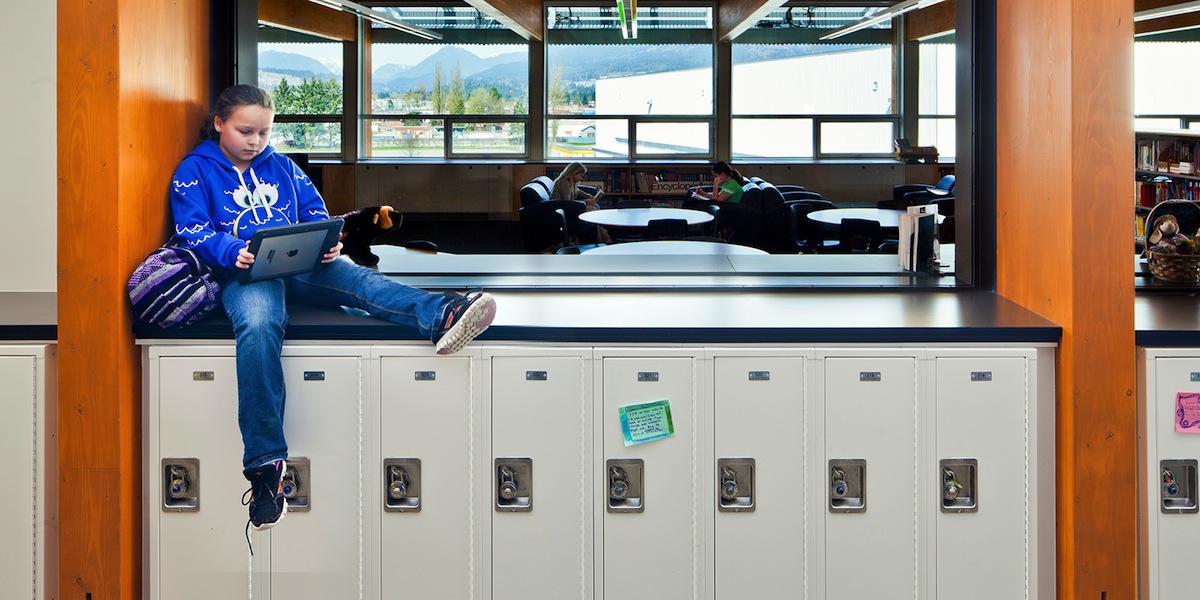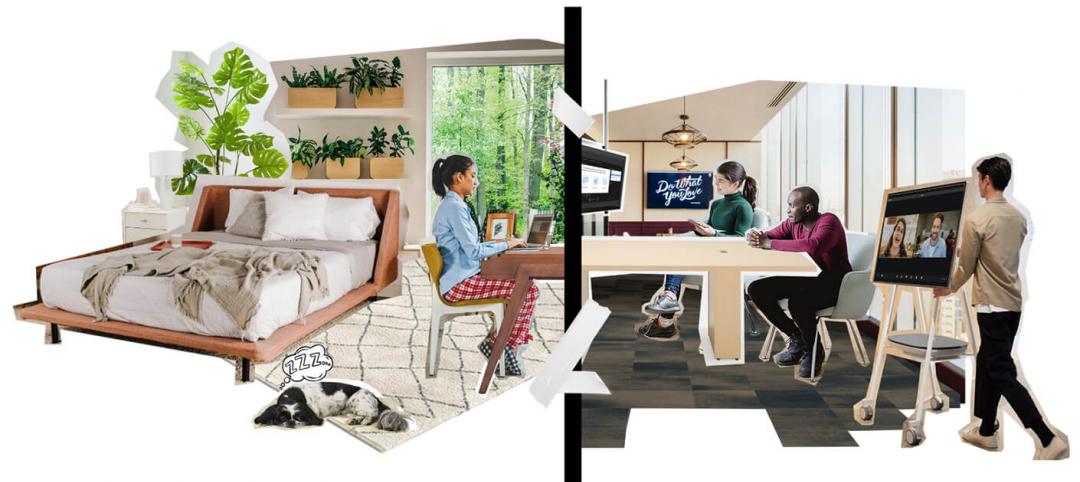Sir Ken Robinson’s famous TED Talk, “How Schools Kill Creativity,” illustrates how the traditional school system undermines children’s imagination. According to a 2014 Gallup poll, our school system not only kills children’s creativity, but also takes its toll on their motivation.
The poll shows that 45% of students in grade levels 5–12 are disengaged at school, with motivation decreasing as they ascend through the grades. The poll also shows that nearly 70% of K-12 teachers are not engaged in their work. In addition, long-range studies demonstrate that a student’s motivation is a better predictor of later success than his or her IQ.
These alarming findings inspired Perkins+Will to dedicate our February SPARK event to the topic of student motivation.

To look at this subject from different perspectives, SPARK Education invited four panelists—Steve Barr, Founder of Green Dot Public Schools and Chair of the California Democrats for Education Reform;Isabelle Brocas, Co-director of the Los Angeles Behavioral Economics Lab at USC; A.J. Webster, Founding Educator of Catalyst Education; and Viktor Venson, Founder of No Right Brain Left Behind—from diverse educational fields.
The panelists exchanged ideas and shared inspiring stories around the central question, “How can we create an environment where students want to succeed?” Before an eclectic audience of more than a hundred people from schools and school districts, the educational technology field, non-profit organizations, and design and architecture firms, the panelists explained why student and teacher motivation is declining, and discussed the role that teachers, new technologies, and the physical environment can play in engaging students.
The panelists were first asked why schools face challenges with motivation. They agreed that connecting what is learned at school with the students’ interests and “real life” would go a long way toward successfully engaging students. According to Viktor Venson, schools have moved from being portals to the world to being among the most disconnected places. Along the same lines, Isabelle Brocas emphasized the need to supplement the “what” and “how” of learning with the more important question of “why” in capturing students’ interest.
Throughout the discussion, Steve Barr humorously suggested that stepping into the shoes of a 15-year old boy—whose attention is the hardest to sustain—holds the key to understanding engagement. His promise to himself to never forget how it is to be 15 years old has formed the basis of his work in school reform.
Asserting that “the policies we put in place are serving another master besides getting students motivated and excited about what they are doing,” A.J. Webster argued that we know how to motivate students, but that the willingness to implement what we know is lacking. He contended that fostering motivation is generally not a priority in most education policies, for which going through a large amount of content seems more important than engagement.
The panelists frequently highlighted the significance of teachers in student motivation. Barr’s challenge to the audience—”Name a great school that does not have great teachers”—stressed the importance of attracting and keeping the best teachers by including them in decision making and by providing desirable work conditions. He also pointed out the need to elevate the general level of the teaching profession.
Venson underlined this by adding that teachers’ and students’ passions are equally as important in nurturing engagement in the classroom. Concerning the role of technology in education, he said, “Technology is never a substitute for a good teacher.”

Not surprisingly, the speakers agreed that new classroom technologies have the potential to support teaching and learning and to allow teachers to become mentors rather than lecturers. New technologies, however, can also be a waste of resources if not employed effectively. Webster illustrated the danger of using new technologies “the old way,” describing how placing a worksheet on an Ipad would most likely neither enrich learning nor make the content more engaging for students.
Brocas felt that switching between tools and types of learning is crucial to sustaining concentration. She explained that the brains of children and teenagers are not made for the level of prolonged attention required to follow a teacher’s lecture. Alternating between listening to the teacher and active learning in groups, or interchanging between lectures and other media, such as tablets, lets children’s brains switch on and off, allowing improved engagement.
Offering a variety of tools and learning styles to the students, as well as including teachers other than the classroom teacher in a child’s learning, was found highly beneficial. Brocas stated that children more readily learn from other children, while Venson highlighted the value that outside mentors can bring to students and teachers. Asking “what STEM teacher would not like to work on a project with NASA JPL” he described how professionals from outside the educational field can bring enrichment and real-life connection to education.
Brocas emphasized how cross-disciplinary learning can show students the interconnectedness of school subjects and highlight their relevance and applicability in multiple professions. Webster added that cross-disciplinary learning fosters collaboration, allows multiple entry points to subjects, and provides the potential to reach a larger number of children with diverse interests.
To better understand the motivational challenges schools face and the abundance of ideas to enhance learning, Barr suggested that we study schools that outperform others with limited resources, and model other schools after them.
As a nod to the architects and designers in the audience, the panel concluded the discussion by considering the importance of the physical environment for student motivation. “We have to be thoughtful and critical about the kind of spaces that we create,” noted Webster. “Let’s create spaces that reinforce flexibility, that reinforce production rather than consumption, that reinforce movement and play.”
Describing how the improvement of the physical environment contributed to the turnaround of Locke High School, formerly one of the state’s poorest-performing high schools, Barr likewise acknowledged the significance of physical space. His vivid portrayal of the transformation of the campus—including an entertaining depiction of Cameron Diaz’s generous donation of olive trees—was one of the evening’s highlights. At Locke High School, the physical surroundings, though secondary in the grander scheme of things, became an expression of how the school’s leaders felt about their students and teachers; the campus became a manifestation of their respect for the learning environment, and as a result was part of the positive change.
The panelists made it clear, however, that it’s not buildings or programs that make the biggest difference; it’s the people. Ultimately, it is motivated teachers, inspiring mentors, and engaged peers who have the greatest potential to improve student motivation. The panelists felt strongly that students need to be connected on a personal level to develop a love for learning. In addition to connecting to teachers, mentors, and other students, they need to see the relationship between learning, their own passions, and “real life” to understand the relevance of what they are learning. One of several students in the audience echoed the panel’s sentiment: “What motivates me? Following my interests.”
Intrinsic motivation—doing things for their own sake—is strongly tied to creativity. This implies that if we care about creativity at schools, we need to concern ourselves with the question of motivation. People are most creative when they are motivated by their passions. Once schools figure out how to connect the curriculum to teachers’ and students’ passions, creativity and motivation will both thrive.
For more on SPARK, visit sparkla.perkinswill.com.
About the Author: Tinka Rogicis an architect and K-12 researcher out of the Los Angeles office. She studies innovative learning environments with a focus on urban planning, learning sciences and new technologies.
More from Author
Perkins and Will | Sep 19, 2023
Transforming shopping malls into 21st century neighborhoods
As we reimagine the antiquated shopping mall, Marc Asnis, AICP, Associate, Perkins&Will, details four first steps to consider.
Perkins and Will | Jul 20, 2023
The co-worker as the new office amenity
Incentivizing, rather than mandating the return to the office, is the key to bringing back happy employees that want to work from the office. Spaces that are designed and curated for human-centric experiences will attract employees back into the workplace, and in turn, make office buildings thrive once again. Perkins&Will’s Wyatt Frantom offers a macro to micro view of the office market and the impact of employees on the future of work.
Perkins and Will | May 30, 2023
How design supports a more holistic approach to training
For today’s college athletes, training is no longer about cramming team practices and weight lifting sessions in between classes.
Perkins and Will | Dec 20, 2022
4 triage design innovations for shorter wait times
Perkins and Will shares a nurse's insights on triage design, and how to help emergency departments make the most of their resources.
Perkins and Will | Aug 30, 2021
The great re-shuffle & re-think
In this new hybrid environment in which we cater to how our employees work best, how will we manage new hybrid work practices and etiquette?
Perkins and Will | May 18, 2020
Global design firms collaborate on new COVID-19 mobile testing lab to bring testing to vulnerable communities worldwide
Perkins and Will, Schmidt Hammer Lassen Architects, and Arup Group develop scalable solutions for increased testing capacity within high-density and under-served neighborhoods.
Perkins and Will | Jun 7, 2019
Workplace wellness: Top 3 tips for Fitwel certification
How can thoughtful design encourage healthier choices, lifestyles, and work environments?
Perkins and Will | Feb 27, 2019
ResilientSEE: A framework to achieve resilience across scales
Conceived in the Boston studio of Perkins+Will, the ResilientSEE team developed a resilient planning framework that can be applied to other neighborhoods, cities, and countries.
Perkins and Will | Nov 28, 2018
Amazon HQ2 and the new geography of work
The big HQ2 takeaway is how geography and mobility are becoming major workplace drivers.
Perkins and Will | Sep 4, 2018
It takes more than money to fund resilience
Resilient design, much like all projects in the built environment, requires funding.
















